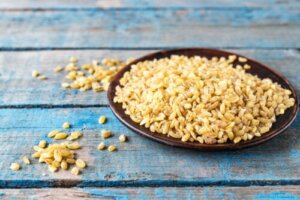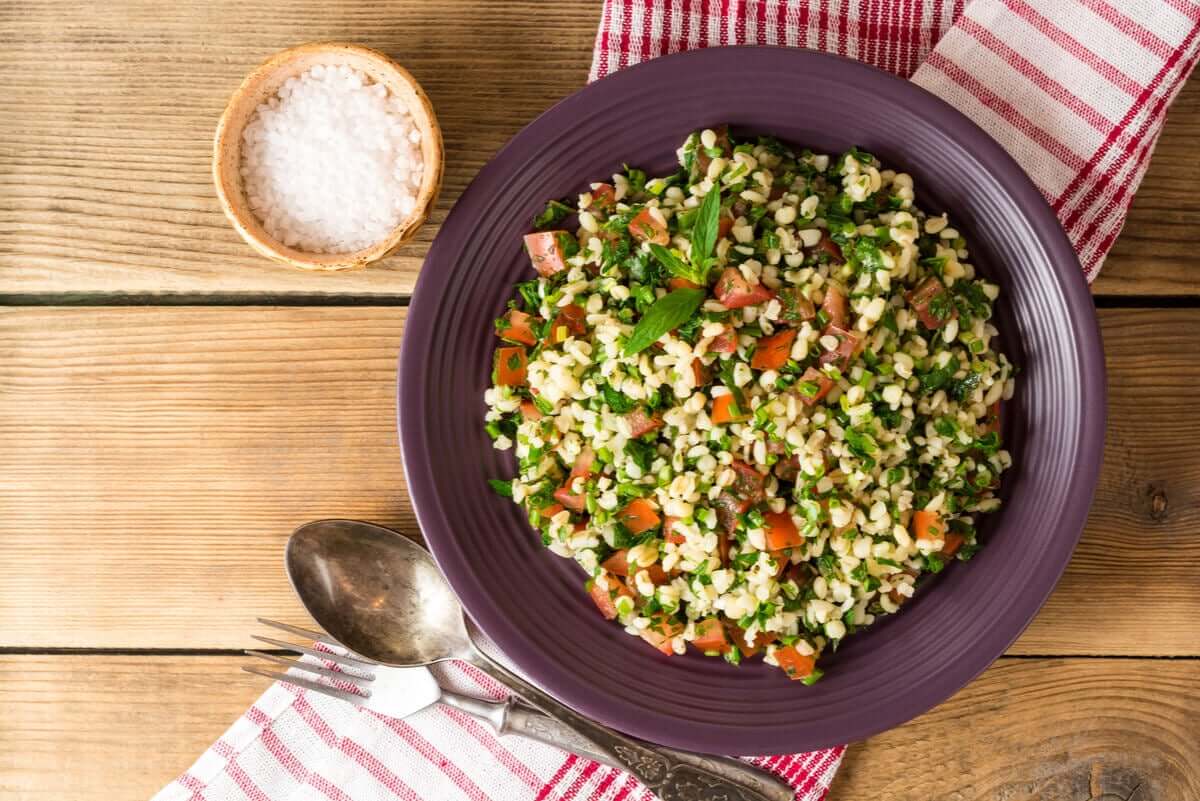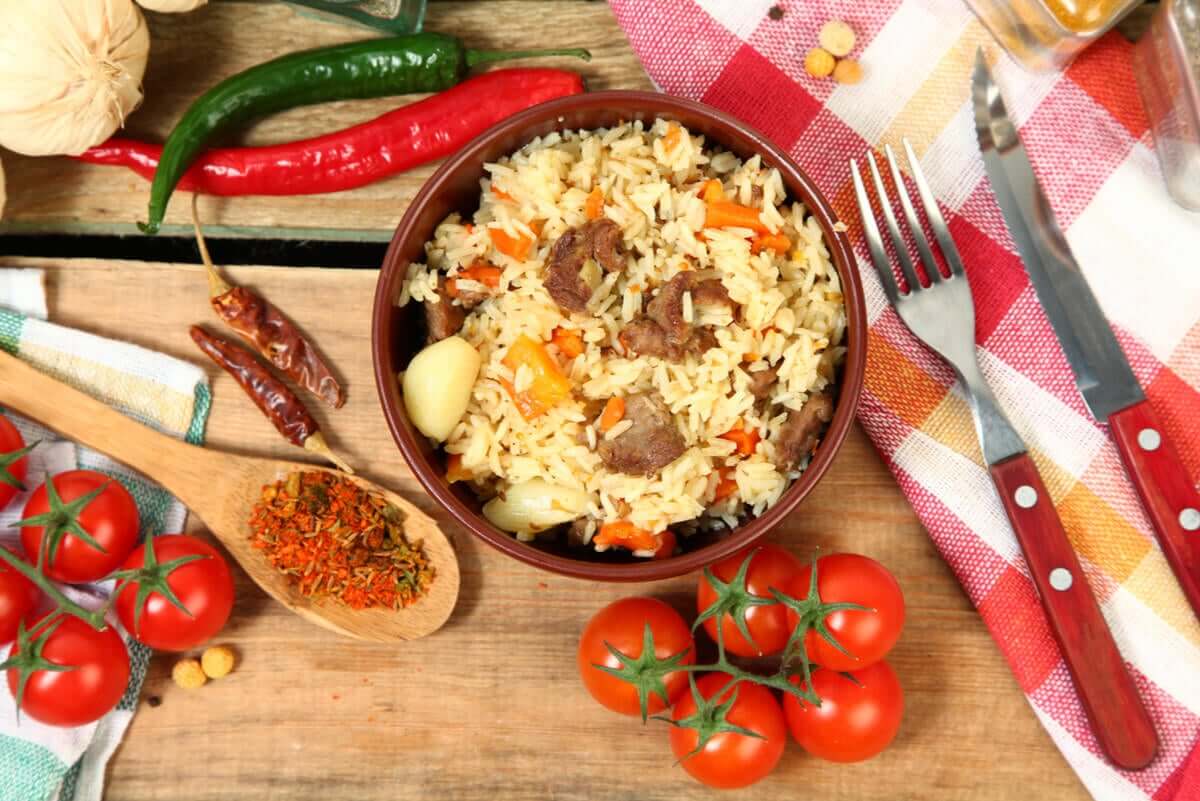Bulgur Wheat: Everything You Need to Know


Written and verified by the nutritionist Florencia Villafañe
Have you heard of bulgur wheat?
The word bulgur is of Turkish origin and refers to an ingredient that comes from wheat. People have consumed it since ancient times in the gastronomy of the Middle East.
Today, they use it in all different parts of the world. In fact, in Latin American countries, such as Paraguay and Argentina, it’s also used to prepare dishes, although in these places it is called burgol wheat.
Find out more about it here!
Bulgur wheat, a typical grain in the Middle East
Bulgur wheat is a whole grain that comes from wheat (Triticum durum). Its traditional elaboration involves cleaning the grains and cooking them in a pot of water.
Then, you must stir it uniformly to assure even cooking. This process requires time and generally involves medium heat until although, after a certain time, the temperature is decreased.
Once the grains are finished cooking, they are drained and set out to dry in the sun for as long as necessary. They are then cooked, drained, and dried in the sun for as long as necessary. Them comes the grinding of the grains. This process produces irregular grains which then pass through a sift which classifies them by size–small, medium, pilaf, and coarse.
Also, the elaboration process involves removing the bran or outer layer the kernels possess. Finally, the drying process conditions the grain until it’s ready, which involves leaving the bulgur in the sun for several days.
According to the study the appeared in the Journal of Food Science and Technology, all the steps that occur in the process provide certain benefits. They provide resistance to contamination by mold and insect attacks, as well as inactivation of enzymes through cooking.
This elaboration process also improves the nutritional quality of the wheat grain. Not only does it produce an attractive flavor, but it also extends the shelf life of the food. Therefore, we achieve a product for fast consumption that’s also inexpensive.

Read also: 3 Delicious and Healthy Quinoa Salads
How does it differ from couscous?
Couscous and bulgur wheat both come from wheat. What’s more, they look similar and sometimes we can use them to make the same dishes. However, they’re not the same thing. In fact, there are some significant differences between the two.
As we already mentioned, the elaboration process of bulgur wheat involves grinding cooked wheat grains. However, the elaboration of couscous–a popular Mediterranean grain–begins with fine wheat flour mixed with water and salt until obtaining a thick dough. Then, small rice-type balls are made with this rice which goes through a precooking process to extend their shelf life and shorten the baking time in the future.
What recipes can you use bulgur wheat for?
One of the typical recipes for which you can use bulgur wheat is tabouleh. This food is a mixture of fresh vegetables with this wheat variant and is ideal for the hot summer months.
You can also use bulgur wheat to make keppe, meatballs that contain minced lamb, and these grains. You can use it to make risotto, stuffed vegetables, and hamburgers, among other options.
The nutritional value of bulgur
Bulgur has the same nutritional properties as wheat. According to the study “Healthy bioactive components of bulgur”, this food contains proteins, complex carbohydrates, and unsaturated fats. Therefore, it’s a source of basic macronutrients.
What’s more, bulgur wheat possesses dietary fiber, iron, magnesium, selenium, phosphorus, and zinc. Fiber, in particular, is a substance that’s useful for those with gastrointestinal disorders having to do with constipation. Its regular consumption stabilizes peristaltic movements and prevents constipation.
Finally, you should note that bulgur wheat is a source of antioxidants and vitamins. Phenolic acids act by blocking the free radicals that promote cellular aging, so their addition has beneficial effects on human health.
What are the benefits of bulgar wheat?
Some of the positive effects that the regular consumption of this food has on human health have to do with the regulation of glycemia and the strengthening of the immune system. At the same time, its contribution to weight loss plans is undeniable.
It maintains normal blood glucose levels
Bulgur has a low glycemic index in comparison to other cereals. This is due to the amount of dietary fiber it contains. Indeed, what this component does is decrease the absorption of sugars.
Thanks to this, it maintains normal sugar levels within the circulation. For this reason, it’s also seen as a preventive food for type 2 diabetes.
It prevents cell damage and improves the immune system
This food provides antioxidant substances, especially phenolic compounds and vitamin E. Thanks to this, it contributes to the normal functioning of the immune system, as it protects the cells from the damage caused by reagents and toxic components. In addition, the minerals it contains are indispensable for metabolism.

Bulgar wheat promotes weight loss
This wheat variety is a great option when it comes to reaching your optimal weight. That’s because, if you add it to liquid preparations, likes soups or broths, it contributes to create a greater sensation of fullness. What happens in these cases is that the fiber swells and you feel full sooner.
See also: The Four Diets Backed by Science
What to remember about bulgur wheat
As you’ve seen, this typical Middle Eastern food has nutritional properties identical to those of whole wheat. Therefore, its regular consumption is beneficial. It helps in the balance of glycemia and the functions of the immune system.
Moreover, due to its elaboration process, it can be cooked in a short time. It has a pleasant taste and can be incorporated into many recipes.
If you haven’t tried it, what are you waiting for? Just remember, if you have celiac disease, gluten intolerance, or a wheat allergy, then you should stay away from bulgur wheat.
All cited sources were thoroughly reviewed by our team to ensure their quality, reliability, currency, and validity. The bibliography of this article was considered reliable and of academic or scientific accuracy.
- Yuksel, A. N., Öner, M. D., & Bayram, M. (2017). Development and characterization of couscous-like product using bulgur flour as by-product. Journal of food science and technology, 54(13), 4452-4463.
- Tacer Caba, Z., Boyacioglu, M. H., & Boyacioglu, D. (2012). Bioactive healthy components of bulgur. International Journal of Food Sciences and Nutrition, 63(2), 250-256.
- Yilmaz, V. A. (2020). Effects of several production methods on technological, textural and sensorial properties of emmer (Triticum turgidum ssp. dicoccum) bulgur. Journal of Food Science and Technology, 1-10.
- Ertaş, N., & Türker, S. (2014). Bulgur processes increase nutrition value: possible role in in-vitro protein digestability, phytic acid, trypsin inhibitor activity and mineral bioavailability. Journal of food science and technology, 51(7), 1401-1405.
- Balci, F., & Bayram, M. (2015). Improving the color of bulgur: new industrial applications of tempering and UV/sun-light treatments. Journal of food science and technology, 52(9), 5579-5589.
- Vilcanqui-Pérez, Fulgencio, and Carlos Vílchez-Perales. “Fibra dietaria: nuevas definiciones, propiedades funcionales y beneficios para la salud. Revisión.” Archivos Latinoamericanos de Nutrición 67.2 (2017): 146-156.
- Urías-Orona, Vania, et al. “Ácidos fenólicos con actividad antioxidante en salvado de maíz y salvado de trigo.” Ecosistemas y recursos agropecuarios 3.7 (2016): 43-50.
- Almeida-Alvarado, Sonia Lorena, Tania Aguilar-López, and Deisy Hervert-Hernández. “La fibra y sus beneficios a la salud.” Anales Venezolanos de Nutrición. Vol. 27. No. 1. Fundación Bengoa, 2014.
- Febles Fernández, Carmen, et al. “Funciones de la vitamina E: actualización.” Revista Cubana de Estomatología 39.1 (2002): 28-32.
- De Munter, Jeroen SL, et al. “Whole grain, bran, and germ intake and risk of type 2 diabetes: a prospective cohort study and systematic review.” PLoS Med 4.8 (2007): e261.
This text is provided for informational purposes only and does not replace consultation with a professional. If in doubt, consult your specialist.








